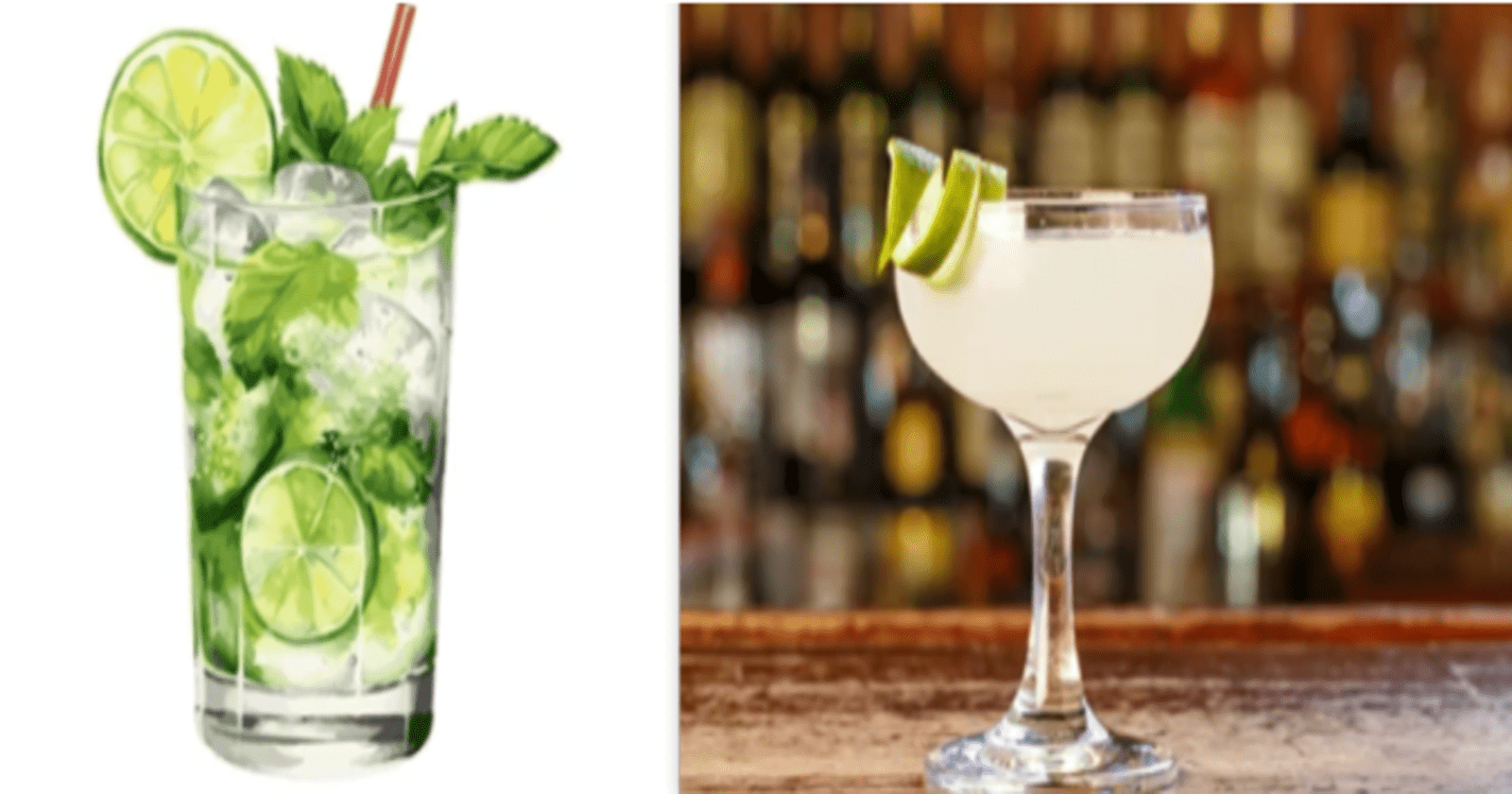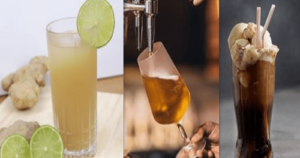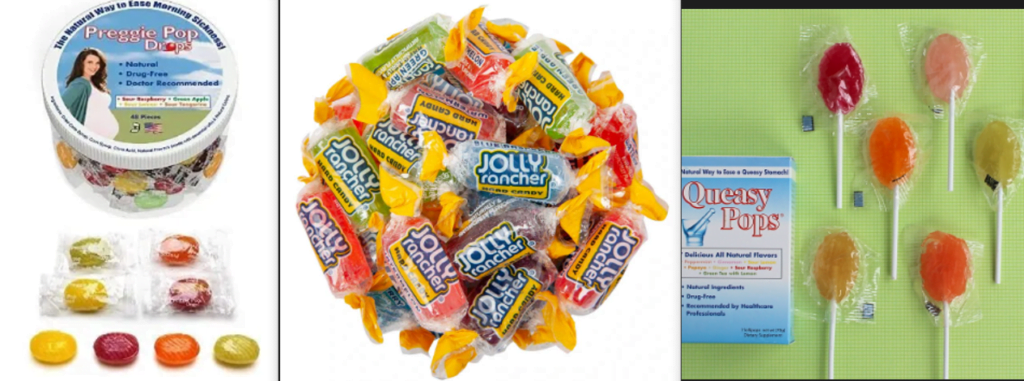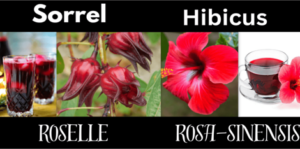Mojito a cocktail made with sugar ,lime juice, Soda water, mint leaves and white rum, served over ice. Daiquiri a cocktail made with rum, lime juice, and sugar, presented in a chilled glass without ice.
A mojito is a delightful cocktail crafted from white rum, lime juice, sugar (sugar cane juice, simple syrup or granulated sugar), soda water (club soda), and a generous handful of fresh mint leaves. This invigorating drink is commonly presented over ice in a tall glass, creating a cool and refreshing beverage. The mojito has a unique flavor because it combines sweet sugar, sour lime juice, and strong white rum. When you add fresh mint leaves, it makes the drink smell and taste really refreshing, that makes it a popular choice for warm weather occasions.
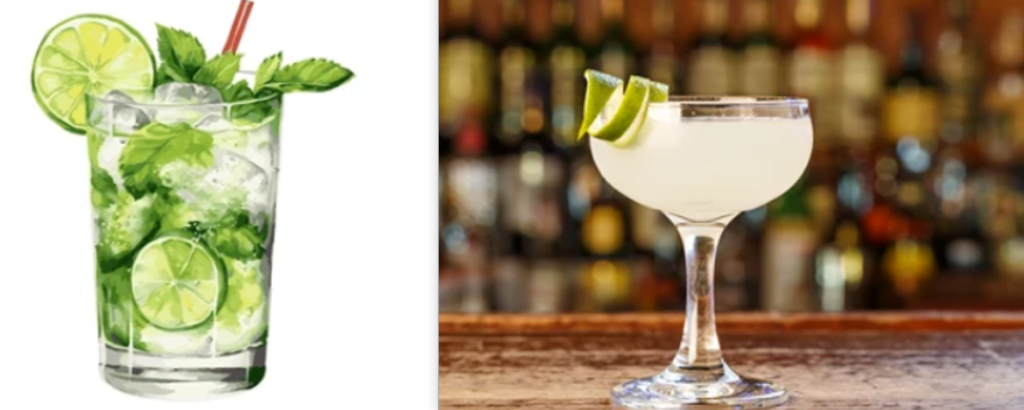
Daiquiri, a revered classic in the realm of cocktails, is an artfully crafted libation that seamlessly melds the robust essence of rum with the zesty vibrancy of freshly squeezed lime juice, sweetened by a judicious addition of sugar. Delicately prepared, its elements are measured with precision and shaken to sublime perfection. The quality rum lends depth, while the lime juice imparts a lively tartness, and the sugar serves as the orchestrator, harmonizing the contrasting notes into a balanced composition. Served in a chilled glass without ice, the daiquiri’s minimalist presentation elevates the experience, allowing one to savor the nuanced interplay of flavors in their purest form a timeless celebration of the artistry inherent in the world of cocktails.
Basic Ingredients of Mojito vs Daiquiri ingredients
| Mojito | Daiquiri |
|---|---|
| Fresh mint leaves (about 10-12 leaves) | 2 ounces light rum |
| 1/2 key lime, cut into 4 wedges | 1 ounce Key lime juice, freshly squeezed |
| 2 tablespoons white sugar, or to taste. | 3/4 ounce sugar syrup |
| 1 cup ice cubes | Garnish: lime twist |
| 1 1/2 ounces white rum | A chill glass |
| 1/2 cup club soda |
7 easy steps to make a Mojito
- Muddle Mint and Lime:
- Place mint leaves and one lime wedge into a sturdy glass. Use a muddler to crush the mint and lime to release the mint’s flavor and the lime’s juice .


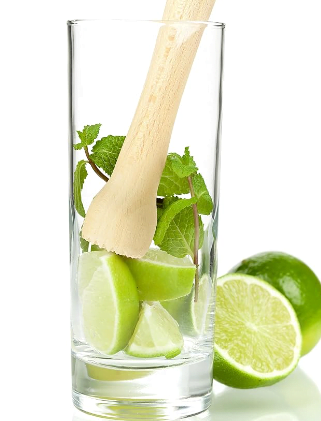
2. Add Sugar:
- Add two more lime wedges and the sugar to the glass. Muddle again to release the lime juice. Do not strain the mixture.
3. Fill the Glass with Ice:
- Fill the glass almost to the top with ice.

4. Pour Rum:
- Pour the rum over the ice.

5.Top with Club Soda:
- Fill the glass with club soda, stirring well to mix.
6. Garnish:
- Garnish with a lime wedge and a sprig of mint.
7. Serve:
- Stir gently to mix the ingredients. Taste and add more sugar if desired. Serve immediately.
8 Easy step to make a quick Daiquiri
- Gather Your Ingredients:
- Make sure you have all the ingredients on hand: white rum, fresh limes, and simple syrup.

you can use what ever white rum you prefer
2. Prepare Your Glass:
- Chill a martini or coupe glass in the freezer or by filling it with ice water.
3. Juice the Limes:
- Squeeze enough fresh lime juice to get 3/4 oz. This is typically the juice of about one lime, but it can vary.
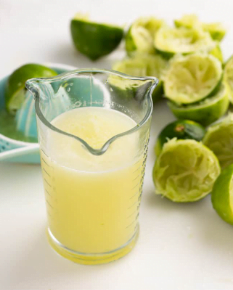
4. Prepare Simple Syrup:
- If you don’t have store-bought simple syrup, you can easily make it by dissolving equal parts sugar and hot water. For example, mix 1/2 cup of sugar with 1/2 cup of hot water and stir until the sugar is fully dissolved. Let it cool before using.]
5. Measure and Mix:
- In a shaker, add 2 Oz of white rum, 3/4 Oz of fresh lime juice, and 1/2 Oz of simple syrup.
6. Shake to mix well
- Shake the ingredients vigorously for about 10-15 seconds. This not only chills the drink but also creates a nice froth.
7. Strain Into Glass:
- Discard the ice from your chilled glass and strain the contents of the shaker into the glass.
8.Garnish (Optional):
- You can garnish your Daiquiri with a lime wheel or wedge on the rim of the glass.
Comparison and Differences between Mojito and Daiquiri
Mojito:
- Base Spirit:
- white Rum.
- Flavor Profile:
- Refreshing and minty with lime, mint, sugar, and soda water.
- Ingredients:
- Mint leaves, lime wedges, sugar, rum, soda water, and ice.
- Sweetener:
- Uses sugar directly, often muddled with lime and mint.
- Presentation:
- Served over ice in a highball glass, garnished with mint sprigs and lime wedges.
- Preparation:
- Involves muddling lime wedges, mint leaves, and sugar together before adding rum, ice, and soda water.
- Variations:
- Various versions, including fruit-infused variations like strawberry or mango Mojitos.
- Origin:
- Originated in Cuba, with a history dating back to the 16th century.
Daiquiri:
- Base Spirit:
- Rum.
- Flavor Profile:
- Straightforward and tart, highlighting the balance between rum, lime, and simple syrup.
- Ingredients:
- White rum, lime juice, simple syrup, and ice.
- Sweetener:
- Typically includes simple syrup, a mixture of equal parts water and sugar.
- Presentation:
- Served straight up in a martini or coupe glass, without ice, and may be garnished with a lime wheel.
- Preparation:
- Requires shaking rum, lime juice, and simple syrup with ice and then straining the mixture into a glass.
- Variations:
- Variations like the Hemingway Daiquiri, which includes grapefruit juice and maraschino liqueur.
- Origin:
- Cuban roots, with its modern form popularized in the early 20th century.
Unlock the Flavor and taste of Mojito Magic
The mojito boasts a delightful combination of flavors, creating a refreshing and balanced taste experience. Sweetness from sugar or simple syrup counters the tartness of freshly squeezed lime juice, forming a dynamic contrast on the palate. Fresh mint leaves, muddled to release their essential oils, contribute a cool and herbal freshness to the mix. The choice of white rum adds a subtle richness, while soda water brings a light effervescence, making the cocktail crisp and easy to sip. Overall, a well-made mojito is a harmonious fusion of sweet, tart, and fresh elements, making it a popular and refreshing choice for cocktail enthusiasts.
Flavor and taste of Daiquiri
The flavor and taste of a Daiquiri can vary based on the specific types of ingredients used and their proportions. Here’s a general idea of what you can expect:
- Rum: The choice of rum greatly influences the flavor of the Daiquiri. Light or white rum is commonly used, as it has a more neutral flavor that allows the other ingredients to shine. However, some variations use aged rum, which can add complexity and depth to the cocktail.
- Lime Juice: Freshly squeezed lime juice is preferred for a Daiquiri. The lime juice provides a bright, tart, and citrusy flavor that balances the sweetness of the other ingredients.
- Simple Syrup: Simple syrup is a mixture of equal parts sugar and water, dissolved together. It adds sweetness to the Daiquiri, rounding out the flavors and providing a smooth, well-balanced taste.
- Ice: The cocktail is typically shaken with ice, which not only chills the drink but also dilutes it slightly. This dilution can help mellow the flavors and create a more refreshing beverage.
The result is a well-balanced cocktail with a refreshing and crisp taste. The lime juice provides acidity, the rum contributes a subtle sweetness and depth, and the simple syrup ties everything together. The overall experience is often described as a harmonious blend of sweet, tart, and slightly boozy flavors. It’s a popular choice for those who enjoy a refreshing and straightforward cocktail with a tropical twist.
History and Origin of Mojito
The mojito, a cocktail with roots tracing back to 19th-century Cuba, holds a unique origin story. Crafted by African slaves toiling in the sugar cane fields, this concoction featured guarapo, the juice extracted from sugar cane, as a central element. Interestingly, the original mojito did not include lime juice, a departure from its contemporary formulation.
The term Mojito has sparked various theories regarding its etymology. One proposal ties it to mojo, a Cuban seasoning infused with lime, commonly used to flavor local dishes. Another theory suggests a linguistic connection, asserting that Mojito is derived from mojadito, the diminutive form of mojado, meaning “wet” in Spanish.
Beyond its linguistic intrigue, the mojito has gained cultural prominence as a favored libation of the renowned author Ernest Hemingway. This association adds a layer of historical charm to the cocktail, solidifying its place not only as a refreshing drink but also as a symbol of Cuban heritage with a tale that intertwines the ingenuity of its creators and the cultural legacy it carries.
History and Origin of Daiquiri
The Daiquiri is a classic cocktail that originated in Cuba. Its history can be traced back to the late 19th century. The exact origin of the Daiquiri is subject to some debate, but it is commonly associated with the mining town of Daiquirí, located near Santiago de Cuba.
The most widely accepted story attributes the creation of the Daiquiri to an American mining engineer named Jennings Cox. According to the legend, Cox was in Cuba in the late 1800s and ran out of gin while entertaining guests. In a resourceful move, he mixed local white rum with lime juice and sugar, creating a refreshing and enjoyable drink. The cocktail was named after the town where Cox was at the time, Daiquirí.
15 types and Variations of Mojito
- Fruit Mojito:
- Add fresh fruit puree or chunks such as strawberries, raspberries, mango, pineapple, or watermelon to the classic Mojito for a fruity twist.
- Berry Mojito:
- Similar to the fruit Mojito but specifically focuses on berries like blueberries, blackberries, or a mix of different berries.
- Coconut Mojito:
- Incorporate coconut-flavored rum or coconut cream for a tropical and creamy variation.
- Pomegranate Mojito:
- Add pomegranate juice or muddled pomegranate seeds for a burst of flavor and a vibrant color.
- Ginger Mojito:
- Infuse the cocktail with the spicy and aromatic kick of fresh ginger. You can use ginger syrup or muddle fresh ginger.
- Cucumber Mint Mojito:
- Include cucumber slices along with mint leaves for a refreshing and crisp flavor.
- Passion Fruit Mojito:
- Introduce passion fruit juice or puree to give the Mojito a tropical and exotic twist.
- Mango Mojito:
- Blend or muddle fresh mango into the classic Mojito for a sweet and tropical taste.
- Raspberry Mint Mojito:
- Combine raspberries with mint for a delightful and slightly tart variation.
- Blackberry Sage Mojito:
- Add blackberries and sage leaves for a unique and herbal flavor profile.
- Watermelon Basil Mojito:
- Incorporate fresh watermelon juice and basil leaves for a refreshing summer variation.
- Champagne Mojito:
- Replace the soda water with champagne or sparkling wine for a bubbly and elegant version.
- Spiced Mojito:
- Infuse the cocktail with spices like cinnamon, cloves, or star anise for a warm and aromatic twist.
- Mojito Royale:
- Similar to the Champagne Mojito, this version includes a splash of champagne or sparkling wine.
- Virgin Mojito: this is a Non-alcoholic mojito and is a great choice if you don’t consume alcohol.
Variations of Daiquiri

- Classic Daiquiri:
- 2 Oz white rum
- 3/4 Oz fresh lime juice
- 1/2 Oz simple syrup
- Shake all ingredients with ice and strain into a chilled cocktail glass.
- Hemingway Daiquiri (Papa Doble):
- 2 Oz white rum
- 3/4 Oz fresh lime juice
- 1/2 Oz grapefruit juice
- 1/2 Oz maraschino liqueur
- 1/4 Oz simple syrup
- Shake all ingredients with ice and strain into a chilled cocktail glass.
- Strawberry Daiquiri:
- 2 Oz white rum
- 1 Oz fresh lime juice
- 3/4 Oz simple syrup
- 2-3 fresh strawberries (or strawberry puree)
- Blend all ingredients with ice until smooth.
- Frozen Daiquiri:
- 2 Oz white rum
- 3/4 Oz fresh lime juice
- 1/2 Oz simple syrup
- 1 cup ice
- Blend all ingredients until smooth.
- Mango Daiquiri:
- 2 Oz white rum
- 1 Oz fresh lime juice
- 3/4 Oz simple syrup
- 1/2 cup fresh mango chunks (or mango puree)
- Blend all ingredients with ice until smooth.
- Banana Daiquiri:
- 2 Oz white rum
- 1 Oz fresh lime juice
- 3/4 Oz simple syrup
- 1 ripe banana
- Blend all ingredients with ice until smooth.
- Coconut Daiquiri:
- 2 Oz white rum
- 1 Oz fresh lime juice
- 3/4 Oz coconut cream
- 1/2 Oz simple syrup
- Shake all ingredients with ice and strain into a chilled cocktail glass.
- Dark and Stormy Daiquiri:
- 2 Oz dark rum
- 3/4 Oz fresh lime juice
- 1/2 Oz simple syrup
- Shake all ingredients with ice and strain into a chilled cocktail glass.
4 Cultural Significance of Mojito and Daiquiri
Culture of Mojito
Cuban Heritage:
- The Mojito has deep roots in Cuban culture and history. It is believed to have originated in the 16th century when an early version of the cocktail was consumed for medicinal purposes.
- The modern Mojito gained popularity in the 20th century, particularly in Havana, Cuba. It became synonymous with the vibrant social scene of Havana and the laid-back lifestyle of the Caribbean.
2. Hemingway Connection:
- The Mojito is famously associated with the American author Ernest Hemingway, who spent significant time in Cuba. Hemingway’s preference for the Mojito at La Bodeguita del Medio, a historic bar in Havana, added to the cocktail’s allure.
3. Refreshing and Summery Vibes:
- Mojito is known for its refreshing combination of mint, lime, sugar, and rum. Its light and crisp nature make it a popular choice, especially in warm climates. It has become a symbol of relaxation and leisure.
4. Popularity Worldwide:
- The Mojito’s popularity has transcended its Cuban origins, becoming a favorite in bars and restaurants around the world. It’s often associated with summer parties, beach destinations, and a casual, festive atmosphere.
Culture of Daiquiri:
1. Cuban Origins:
- Like the Mojito, the Daiquiri has Cuban origins. It was created in the early 20th century in the mining town of Daiquiri, near Santiago de Cuba.
- The original Daiquiri was a simple mixture of rum, lime, and sugar, shaken over ice. It was a favorite among American expatriates and visitors to Cuba.
2. Hollywood Glamour:
- The Daiquiri gained international fame when it became a favorite of celebrities and Hollywood stars. Personalities like Ernest Hemingway and John F. Kennedy were known to enjoy Daiquiris, contributing to its status as a sophisticated cocktail.
3. Versatility:
- The Daiquiri has evolved into various iterations, including frozen versions and flavored variations. Its basic formula of rum, lime, and sugar serves as a versatile base for experimentation, making it a staple in cocktail culture.
Cultural Impact of Mojito and Daiquiri
- The Daiquiri has left an indelible mark on cocktail culture, influencing the way people perceive and appreciate rum-based drinks. It is often considered a classic cocktail and is a standard on many cocktail menus.
both the Mojito and Daiquiri have deep cultural roots in Cuba, with associations to historical events and prominent figures. They have become symbols of relaxation, leisure, and elegance, making them integral to the global cocktail culture. The stories and traditions surrounding these drinks continue to contribute to their enduring popularity.
Caloric content of Mojito and Daiquiri
The caloric content of cocktails can vary based on factors such as the specific recipe used, ingredient proportions, and any additional ingredients. Additionally, the size of the drink and specific brands of ingredients can impact the overall caloric intake. However, I can provide you with a general idea of the calorie content for a standard serving of Mojito and Daiquiri.
- Mojito:
- A classic Mojito is typically made with white rum, sugar, lime juice, soda water, and mint.
- The caloric content can vary, but a standard 8-ounce (240 ml) serving may contain around 150 to 200 calories.
- Daiquiri:
- A basic Daiquiri is usually made with white rum, lime juice, and simple syrup.
- The caloric content can vary, but a standard 4-ounce (120 ml) serving may contain around 150 to 200 calories.
It’s important to note that these are general estimates, and the actual caloric content may vary based on the specific ingredients and proportions used. If you are concerned about the caloric content of these cocktails, you may want to consider using low-calorie mixers or reducing the amount of sweeteners in the recipes. Additionally, keep in mind that alcohol itself contributes to the overall caloric content of the drinks.
Examples of common medications Known to Interact negatively with the Alcohol in Mojito and Daiquiri.
- Benzodiazepines (e.g., Xanax, Valium):
- Risk: Combining with alcohol can lead to respiratory depression, increasing the risk of death.
- Injuries: Alcohol intensifies sedative effects, raising the risk of accidents, falls, and memory issues.
- “Z-drugs” for insomnia (e.g., Ambien):
- Risk: Alcohol can worsen side effects like impaired coordination, memory issues, and sleep-related behaviors.
- Antidepressants (e.g., Wellbutrin, Effexor):
- Effects: Alcohol may amplify side effects like drowsiness, dizziness, and reduce antidepressant effectiveness.
- Dangerous Interactions: Some antidepressants can cause dangerous reactions when combined with certain foods or drinks, like red wine.
- Opioids (e.g., oxycodone, fentanyl):
- Risk: Combining with alcohol increases the risk of respiratory depression, overdose, and fatal accidents.
- Over-the-counter pain relievers (NSAIDs, Acetaminophen):
- NSAIDs: Alcohol increases the risk of gastrointestinal bleeding when combined with drugs like ibuprofen.
- Acetaminophen: Chronic alcohol use combined with acetaminophen can lead to liver damage.
- Anticoagulant and cardiovascular medications (e.g., Warfarin, Verapamil):
- Warfarin: Alcohol increases the risk of major bleeding.
- Verapamil: Inhibits alcohol metabolism, leading to prolonged elevated blood alcohol levels.
- Beta-blockers (e.g., Propranolol):
- Effects: Alcohol may increase the medication’s side effects, including dizziness and changes in heart rate.
- Antimicrobials (e.g., Erythromycin, Ketoconazole):
- Reduced Efficacy: Alcohol may reduce the effectiveness of some antibiotics.
- Liver Toxicity: Combining certain antibiotics with alcohol can lead to liver toxicity.
- Disulfiram-like Reactions: Some antibiotics can cause reactions similar to the drug disulfiram when combined with alcohol, leading to facial flushing, nausea, and more.
Remember, always consult with your healthcare provider about potential interactions between medications and alcohol.
Resources
https://www.niaaa.nih.gov/health-professionals-communities/core-resource-on-alcohol/
https://en.wikipedia.org/wiki/Mojito#
